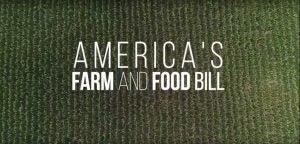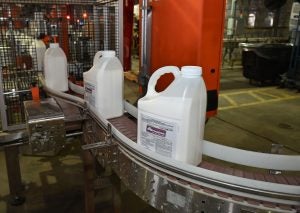Picture it. Midday on a crisp fall Saturday. The sunshine is filtering through the falling leaves dazzling in golds and maroons. You settle into the couch sipping on some hot caramel apple cider. You grab the remote and turn to your favorite team’s football game.
And then you start to see them. Campaign commercials. Candidate so-and-so approves this message. This guy doesn’t like this lady. A political fund urges you to vote on a ballot proposal like your life depends on it.
Make. It. Stop.
Luckily, it will stop. By Wednesday morning, the midterm elections will be over. We’ll see where the dust settles and whether there’s a shift in power at various levels (many expectations are suggesting a split chamber). But before we get there, most of us need to cast our ballots. I probably say this every cycle, but I’m really, really, really serious this time: the 2022 midterms are crucial.
So here’s a highlight on the issues most directly impacting farmers, and hopefully influencing their — and your — vote.

Inflation
Let’s start with the obvious one: inflation. Most Americans are acutely aware of how prices have quickly increased over the past year. Nowhere is that more apparent than at the grocery store. Farmers are people too, and they also buy food to feed their families. So they’re just as susceptible to higher prices as everyone else.
But they also see it on the production side. By some estimates, the 2022 crop cost 40 percent more to grow, making the national inflation rate of 8.2 percent look like child’s play. Limited supply, increasing costs, and uncertain markets are creating a perfect economic storm that some fear could rival the farm crisis of the 1980s.
Inflation is certainly a global phenomenon, and caused by a variety of factors. And where the U.S. ranks compared to other countries globally depends on how you define the relevant terms. What’s clear though is that all Americans are feeling the pinch, and this issue will guide many voters — both rural and urban.

Fuel
Yeah, I know. Fuel prices are technically a piece of the inflation picture. But after filling up my tank the other day, I can assure you the sky-high prices deserve their own mention.
Forget gasoline though, let’s focus on diesel. It’s undisputedly expensive. Right now, the national average price for a gallon of diesel is around $5.32. In 2021, the average price of diesel was $3.29 per gallon. And back in 2019, it was $3.06.
No big deal because none of us fill our vehicles with diesel, right? Not quite. Most consumer goods are shipped on tractor-trailers running on diesel. Our farm equipment is all powered with diesel. This fuel touches many different parts of our economy. And those higher prices are ultimately passed along to consumers, which means prices will continue to rise.
Right now the U.S.’ national reserves are depleted. We have less than a month worth of supplies (the lowest since 1945). And some people are talking about rolling outages of fuel.
Like everything else, the problem is complicated. Russia’s invasion of Ukraine hasn’t helped, especially with tariffs heaped on that country’s oil exports. Europeans are also slashing their production in response to climate change. And there’s no question the current administration — and some states, like California — have an anti-oil agenda, even though most of us have no choice but to consume it. Those initiatives have merit, but right now it’s driving up prices.

The 2023 Farm Bill
This legislation is like a bad penny. It. Keeps. Coming. Back.
All kidding aside, the farm bill and its issues are rehashed every five years as its predecessor expires. And it always seems as though the stakes are higher and higher. Most likely, that’s because there are so many groups, industries, and activists trying to influence how the final bill looks and acts. Predictions for this farm bill are that it could reach $1.3 trillion.
As you may know, the farm bill is split between agriculture programming and nutritional supports (think food stamps). Both pieces are pivotal for Congress and the White House to actually pass the new law, if the three or four previous iterations are any guide. While Republicans tend to support the farm side, Democrats tend to push the food assistance.
The balance of power though seems important. Remarkably, the Senate Committee on Agriculture, Nutrition, and Forestry tends to do a darn good job of drafting a compromise bill that satisfies both sides. It’s one thing that Washington, D.C., can actually rally around, even with a divided government. Because President Joe Biden sits in the Oval Office, it’s probably better if Republicans control Congress.
By the way, the committee kicked off its 2023 farm bill process in April of 2022 at Michigan State University (go green!). The plan has been to have the bill ready by October 2023, but ask any political expert out there, and they’ll tell you that it’s highly unlikely lawmakers will actually hit that target.

Pesticide Regulations
This issue is one that I’m increasingly worried about. For decades now, the Environmental Protection Agency successfully regulated the use of pesticides under the Federal Insecticide, Fungicide, and Rodenticide Act. But we’re now seeing an all-out attack on pesticides that threatens to leave farmers with few options to protect their crops.
The EPA’s moves to severely limit the future use of atrazine stands out. So do efforts by activist groups to force the EPA to conduct unnecessary and rushed evaluations of new and old pesticides. We’re seeing disinformation from social media turn into bad policy that removes pesticides from the market. It’s very possible we’ll encounter more restrictions on dicamba. And states are increasingly enacting their own legislation that limits or reduces the availability of pesticides and, in many cases, could contradict federal guidelines and thus confuse people’s understanding of what to follow.

Some Candidates
I can’t finish a piece about the 2022 midterm election without mentioning one of the biggest elephants in the room: Mehmet Oz. He’s running in Pennsylvania as the Republican candidate for the U.S. Senate. When I list people who have most stoked the fear and disinformation around our modern food system (think claims about “superfoods” and lots of anti-GMO positions), Oz is always toward the top of the list.
I’ll admit I fell asleep on his candidacy. I remember vaguely hearing that he was running in the primary. But, I told myself, he’ll never get the nomination! Here we are several months later and he’s in a dead heat with his Democratic opponent. Seriously, he might pull this off!
Is John Fetterman the better choice? I have concerns about him too, including for his health. I don’t envy Pennsylvania voters. But I can’t imagine Oz using his platform of lies to catapult himself into the halls of Congress. Then again, I suppose that’s how most candidates get to Congress …
Go vote!
Amanda Zaluckyj blogs under the name The Farmer’s Daughter USA. Her goal is to promote farmers and tackle the misinformation swirling around the U.S. food industry.



